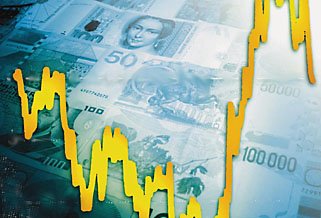Understanding Foreign Currency Pairs
By: Martin Chandra
Trading the forex market has many benefits over other financial markets, among the most important are: superior liquidity, 24hrs market, better execution, and others. Traders and investor see the forex market as a new speculation or diversifying opportunity because of these benefits.
Simply said, no other trading instrument comes even closely to forex market when it comes to liquidity, 24hr market environment and last but not the least, profit potential. Forex (currency) market is the largest (most liquid) financial market in the world, with an average daily volume of more than US$ 1.5 trillion, which is more than all of the global equity markets combined.
Foreign exchange market is where the currency of one nation is traded for that of another. Therefore, forex trading is always traded in pairs.
However, the way currencies are quoted against each other can initially seem a little confusing, especially for beginner. Basically, there are two rules of thumb - and three exceptions to the first rule.
Rule No. 1: All currency rate quotes are expressed as units per dollar. For example, the rate between the Japanesse yen (JPY) and the U.S. Dollar (USD) is expressed as 103.14 Japanese yen per dollar. The technical term for this is that USD is the "base currency" against which JPY is quoted.
A higher quote, such as 104.33, means that the dollar has appreciated in value compared to the yen, because it now takes more JPY to the same amount of USD. When charted, this means that a continuously stronger dollar will result in an uptrend on the chart. If you believe USD will continue to trend higher, which means JPY will trend lower, then you would sell JPY.
The exceptions to the first rule are the British poundsterling (GBP), European euro (EUR), and Australian dollar (AUD). These currencies are the base currencies against the USD. When rates between the USD and any of these currencies are charted, a continously stronger dollar will appear as a downtrend on the chary. If USD has appreciated relative to GBP from yesterday to today, today's quote between GBP and USD is lower than yesterday's quote. If you believe USD will continue to trend lower, and consequently GBP to trend higher, you should sell GBP.
Rule No. 2: All quote denominations are backwards with the base currency stated first. For example, the Swiss franc (CHF) and USD is denominated as USD/CHF. The quote between USD and EUR is denominated EUR/USD. Another example of denominations are USD/JPY, USD/CAD, GBP/USD, AUD/USD, etc.
Article Source: http://www.articlecafe.net


No comments:
Post a Comment